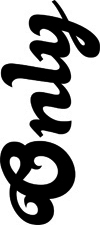only magazine
↵ home
Expanded Cinema

By Adam Thomas
Friday January 21, 2005
The blinding light of Alex MacKenzie
Constructed through an assemblage of moments from forgotten educational and instructional films, Alex MacKenzie’s film Parallax, explores the relationship between context and meaning, image and expectation. In a work that includes manipulation of the film itself, Parallax is an experiment in the power of the missed moment. Using two analytic projectors–the kind used for old football play analysis, two reels of film —one negative and one positive, projected simultaneously, MacKenzie masks parts, and controls the speed and the syncopation of the images we are watching. As an example of expanded cinema, he has created a work that exists in multiple spaces and challenges us to investigate and examine those single frames.
ONLY: The film is composed of “found” footage. What was your method for the selection of the images you use?
Alex MacKenzie: In terms of process, I just started looking at reels that I had in my collection, just wondering what kind of stuff I had. I really wanted to find images that move me, or take me somewhere, probably divorced from their original context. Often times I would just turn the sound off. I realized that the images were quite beautiful even though their original intention was not to be beautiful. Then I looked at it all to see what the common thread that all of this stuff had and then I moved towards something. By looking at the images I began to see similarities or clashes and started to think about why these images appealed to me and, psychologically, what they had to do with each other. Then I started to build.
ONLY: In this piece you use both a negative and a positive projection and a doubling technique where you run two similar, if not identical, shots almost at the same time, how did that develop?
AM: A piece I had done in the past had played with the negative/positive thing in a more variable way than this piece does. But I liked the idea of layering two images and playing with the speed and the sense of expectation of two images coming together or coming apart. In the movement and the shifting of the images, there often develops an expectation when you’re watching it–like you want it to come together. And when it does there is some sort of satisfaction. When it doesn’t there is some kind of tension. So it kind of plays on that idea.
ONLY: The title “Parallax” suggests a shifting of perspective. Do you take this to be a mental shift or a physical one?
AM: I think that it kind of carries a double meaning. There’s the mental shifting but there’s also the more essentialist way. Where there are two visions of the same thing, one coming from here (draws invisible line to left eye) and one coming from here (line to right eye) and then you close one eye (holds hand out in front) and then the other. Your eyes are parallaxing and your hand moves. There is the same sense when you use two projectors but with imagery. And then as well, there is this idea that the perspective, moving this much (indicates small amount) can change things monumentally. And that monumental shift is a subtle shift, but it is also a crucial shift.
ONLY: Parallax is more than just the films being projected. The piece itself includes you participating in the performance. You are actually manipulating the film as the audience experiences it live?
AM: Normally the creative part of the process ends when you finish a film and send it off to festivals or wherever, and the rest of it is administrative. Most of the time you don’t even know how people feel about it. I got to a point where I realized the part that I enjoyed the most was the process, and wanted to figure out a way to make the process continue; to find a way so that the process is the piece.
I knew that I wanted to do it in a live way, that I could manage, so that I could change it and adjust it depending on how I wanted it to unfold at any given time. I wanted to be able, essentially, to optically print live images. Now obviously there is a lot of serendipity involved and chance elements, but these for me are crucial to the piece. And no two performances will be the same.
Part of the appeal, for me at least, is that ephemeral nature and that it’s not going to exist forever. That you present it and then it’s gone. -
Experience Parallax – 7:30 pm Wednesday January 26th, 2005 at the Western Front (303 east 8th)
